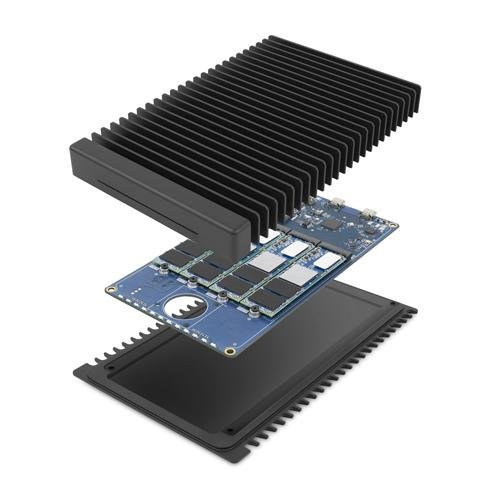

The benefit of having four hard drives in a single enclosure is that the drives can interact with each other with RAID - a system of drive redundancy. Also, you can charge your laptop with this one cable. The cool thing about Thunderbolt is that it has such a high transfer rate that you can actually daisy chain additional accessories - you could potentially have several Thunderbay units all plugged into each other connected to your computer with a single cable. It connects to my computer via Thunderbolt 3, which is capable of transferring five gigabytes of data per second. Note: Opting to add your own drives means that the Thunderbay enclosure will have to certify them when setting it up - a process that can take a couple of days depending on the size of the drives. This should easily last me several years worth of photo and video. I opted for the enclosure and filled it with four 8TB Seagate IronWolf NAS Drives, for a total of 32TB of storage (kind of - we’ll get to that in a second). It’s available with a variety of different hard drive configurations or as an empty enclosure into which you can load your own drives. The Thunderbay 4, in essence, is a metal box with a bunch of (four, actually) hard drives in it. I wanted something simple and not in need of constant tinkering, something that just runs in the background, out of sight, out of mind. SHIT.Įlegance: This is probably the most important one for me. We will save that for another blog post, but for now just know to BACK. Note - this blog post doesn’t go into backing up your data or any backup solutions I use. I wanted something a little more robust that can stand up to the chance of disk failures. And when they fail, you can lose years of your past work. That’s just the nature of having a little disk spinning in circles 7200 times a minute.

Robustness: Let’s be honest - we need to think of spinning hard drives as a consumable product. And video editing is a no-go, especially with big 4K video files. This works ok for basic photo work, but when you’re working with massive photo libraries and big imports it will slow you down.
#Owc softraid big sur portable
Speed: A normal portable hard drive has read and write speeds of around 100 megabytes per second. I needed something that can easily last for 4-5 years without having to think about it. I had to dig myself out of this hole.Īfter some research I decided my solution needed four things:Ĭapacity: From the past year alone I have over 3 terabytes of photography, and about a terabyte of video footage as well. You’ve fallen into the nightmare of hard drive hell. But what happens after a few years when you’ve amassed terabytes of photos and videos? Next thing you know, you’ve got a mess of hard drives everywhere, and you’re always swapping them or even losing (!) them.


 0 kommentar(er)
0 kommentar(er)
